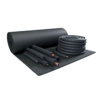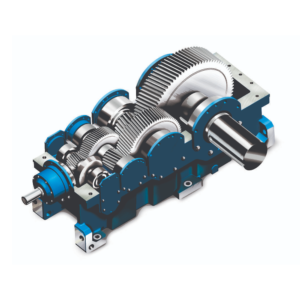🚚 Fast Delivery | ⭐ Best Quality | 📞 24/7 Support
+971 2 552 3918
info@coolwaybm.com
- Power Tools & Machinery
- Fire and Safety Equipement
Fire and Safety Equipement
- Adhesives
- Plumbing & Sanitary
- Packing Materials
Packing Materials
- Abrasives
- Carpentry
- Welding Accessories
Welding Accessories
- Fasteners
- Lock & Furniture Accessories
Lock & Furniture Accessories
- A/C Refrigeration
- Electrical
Electrical
د.إ1.00


د.إ1.00
You can add any HTML here
We suggest you to create a Saved Template in Dashboard -> Templates -> Saved Templates and use it by switching content type above to Saved template.
The primary function of a gas recovery machine is to extract refrigerant from air conditioners, refrigerators, and other cooling systems before repairs or replacements are made. Instead of venting the gas into the atmosphere, which could be harmful, the machine safely collects and stores it in a recovery tank for reuse or proper disposal. This process ensures that refrigerants, such as CFCs (chlorofluorocarbons), HCFCs (hydrochlorofluorocarbons), and HFCs (hydrofluorocarbons), are handled in compliance with environmental regulations, preventing pollutants from contributing to climate change.
A gas recovery machine typically features an advanced filtration system that cleans and purifies the recovered gas. This filtration removes impurities and contaminants, allowing the refrigerant to be safely reused in other systems. Many machines are compatible with a wide range of refrigerants, making them versatile tools for technicians working with different types of HVAC and refrigeration systems.
In addition to ensuring compliance with environmental standards, the use of a gas recovery machine also benefits system performance. By properly recovering and recycling refrigerants, technicians can prevent unnecessary loss of gas, which could lead to increased costs and inefficient cooling. The recovered refrigerant can be reused in the same system or in other systems, reducing the need for purchasing new refrigerant and lowering overall service costs.
Gas recovery machines come in various sizes and models, ranging from portable units designed for small-scale residential repairs to large, heavy-duty machines intended for commercial applications. The portable models are lightweight and easy to transport, while the larger units provide higher recovery capacities and faster recovery rates for industrial-scale systems.
In conclusion, a Gas Recovery Machine is an indispensable tool for HVAC and refrigeration professionals, ensuring safe, efficient, and environmentally responsible handling of refrigerants. By reducing refrigerant waste, supporting system efficiency, and complying with environmental regulations, these machines play a key role in both the operation and maintenance of cooling systems.
There is £4.99 charge for delivery under £50 Orders. Additional charges will be imposed by our couriers for delivery to remote area, a surcharge may be levied to cover carriage to these areas.
GAVER MACHINE
د.إ1.00
Short Description :
- A Gas Recovery Machine is designed to safely extract refrigerant gases from HVAC and refrigeration systems.
- It helps recover refrigerant for reuse or proper disposal, making it an essential tool for environmentally responsible service and maintenance.
- Commonly used in servicing air conditioners, refrigerators, and other cooling systems.
- Reduces refrigerant loss and prevents contamination of the environment.
- Helps maintain system efficiency by ensuring that refrigerants are handled properly during repairs or upgrades.
- Equipped with advanced filtration systems to clean and purify the recovered gas.
- Compatible with a variety of refrigerants, including CFCs, HCFCs, and HFCs.
- Allows for proper storage of recovered gases, ensuring safe handling and compliance with environmental regulations.
- Essential for HVAC professionals and technicians to follow environmental standards and regulations.
- Easy to use, portable, and comes in different models for various system sizes and refrigerant types.
The primary function of a gas recovery machine is to extract refrigerant from air conditioners, refrigerators, and other cooling systems before repairs or replacements are made. Instead of venting the gas into the atmosphere, which could be harmful, the machine safely collects and stores it in a recovery tank for reuse or proper disposal. This process ensures that refrigerants, such as CFCs (chlorofluorocarbons), HCFCs (hydrochlorofluorocarbons), and HFCs (hydrofluorocarbons), are handled in compliance with environmental regulations, preventing pollutants from contributing to climate change.
A gas recovery machine typically features an advanced filtration system that cleans and purifies the recovered gas. This filtration removes impurities and contaminants, allowing the refrigerant to be safely reused in other systems. Many machines are compatible with a wide range of refrigerants, making them versatile tools for technicians working with different types of HVAC and refrigeration systems.
In addition to ensuring compliance with environmental standards, the use of a gas recovery machine also benefits system performance. By properly recovering and recycling refrigerants, technicians can prevent unnecessary loss of gas, which could lead to increased costs and inefficient cooling. The recovered refrigerant can be reused in the same system or in other systems, reducing the need for purchasing new refrigerant and lowering overall service costs.
Gas recovery machines come in various sizes and models, ranging from portable units designed for small-scale residential repairs to large, heavy-duty machines intended for commercial applications. The portable models are lightweight and easy to transport, while the larger units provide higher recovery capacities and faster recovery rates for industrial-scale systems.
In conclusion, a Gas Recovery Machine is an indispensable tool for HVAC and refrigeration professionals, ensuring safe, efficient, and environmentally responsible handling of refrigerants. By reducing refrigerant waste, supporting system efficiency, and complying with environmental regulations, these machines play a key role in both the operation and maintenance of cooling systems.
There is £4.99 charge for delivery under £50 Orders. Additional charges will be imposed by our couriers for delivery to remote area, a surcharge may be levied to cover carriage to these areas.
Reviews
There are no reviews yet.
Buy more save more!
Buy from 2 to 4 items and get 10% OFF
on each productBuy from 5 to 8 items and get 15% OFF
on each product- Free shipping on all orders above 50,00
- No hassle returns, 30 days return
- Next day delivery within your country










Reviews
There are no reviews yet.